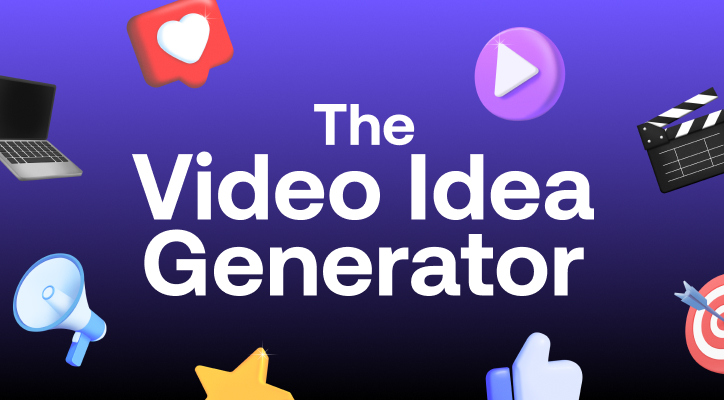You've been trying to fill a position opening for months. Despite promoting the role on job boards and countless social media posts, the candidates you attract aren't the right fit.
Your role description might not be the problem here. Instead, it could be that your employer brand isn't strong enough to attract high-quality candidates for your open roles.
Employer branding is the key to effective recruitment. In this article, we’ll show you how to create an employer brand that earns mindshare, so you can hire the top talent you need quickly.
What is employer branding?
Employer branding is everything you do to build up your company's reputation and position it as a great place to work. It’s a bit like marketing — only this time, your company is the product, and you're selling it to existing and prospective employees.
There are many ways to create employer brand content. Whatever options you choose, ensure you're showing your company values in action — not just regurgitating a list of values off your website or brand guidelines.
Why use employer branding for recruitment?
Here are 3 reasons why employer branding is important for your recruiting:
1. Grow your talent pipeline
A reputable employer brand means that candidates are already familiar with your organization’s culture. They've interacted with your employer branded content on social media and are probably connected to some of your staff on LinkedIn. These people are more likely to apply to your open roles than someone who's never heard of your company.
2. Hire A+ talent quickly
It speeds up your time to hire by up to 50%. Thanks to your robust talent pipeline, you can fill positions as they become available rather than leaving open positions on your website and job boards for months on end.
The faster you hire, the quicker you can amp up your team's productivity and start reaping the ROI of your new employees.
3. Reduce your cost of hiring
A strong employer brand can cut your recruiting costs in half. Instead of advertising openings on third-party platforms, these roles get organic traction from candidates who already know, like, and trust your organization. When expanding into new regions, this advantage can be complemented by an employer of record service, which helps manage local hiring without adding extra administrative burden.
By reducing the amount of money you spend on hiring, you free up funds for other critical areas of your business to generate more ROI for your company.
The difference between employer branding and recruitment marketing
Here are 5 major differences between these two strategies:
1. Definition
Employer branding is basically everything you do to convince your employees and job seekers that your company is a great place to work. Recruitment marketing, on the other hand, is the process of promoting open roles to encourage applications from suitable candidates.
2. Duration
Recruitment marketing lasts as long as you need to fill a particular role. Once you've hired someone for the position, this process ends.
Employer branding, on the other hand, is a continuous process. You need to commit to continuously showing your company's culture to win over great candidates and retain them.
3. Examples
An employer branding example of recruitment marketing is posting an open role on a job site to target the right applicants. You can shoot some of your best recruitment videos and post them on LinkedIn to target top candidates.
On the flip side, a good example of social media employer branding is setting up an employee advocacy program to encourage existing employees to promote your company on their personal social media pages. Or implementing a health and wellness program to improve your team's working conditions.
4. Target audience
Recruitment marketing is external. It only targets prospective employees who might be interested and qualified for a specific role.
Employer branding is both internal and external. You need strong employer branding to target and retain A+ candidates. And data backs this up – showing that companies that actively manage their reputation can reduce employee turnover by up to 28%!
5. Goal
Recruitment marketing has a short-term goal, while employer branding has a long-term goal. The goal is to fill the open position in the shortest time possible.
Employer branding, on the other hand, is about changing people's perceptions of your business. Creating a successful employer brand takes time, but once you've done it, it's a gift that keeps on giving.
How to build a powerful employer branding strategy
Here are 5 simple steps for creating a winning recruitment strategy that targets great candidates in your industry.
1. Set your employer value proposition
Your employer value proposition (EVP) is the foundation of your employer branding strategy.
It is what sets you apart from other companies and makes you an attractive employer to potential candidates. Airbnb, for example, says its EVP is to create a world where anyone can belong anywhere. This statement reflects on the company's work culture and perks.
Think beyond monetary compensation — what unique opportunities and experiences does your company offer employees? Don't try to mold your EVP to fit what you think candidates want to hear. Instead, be honest about what your company can offer and what sets you apart.
2. Craft an ideal candidate profile
An ideal candidate profile (ICP) describes the skills, experiences, and behavior of your perfect candidate. It guides you in hiring great people for the role.
Here are a few tips for crafting an ICP:
- List out the requirements
- List of the key competencies
- List out the personality traits required for success in the role
- Create a master list with the prioritized criteria. These are the most important boxes a candidate must check to get hired.
- Create a “nice-to-have” list of requirements.
For example, if you’re thinking of hiring a video editor, your ICP list may look something like this:
Must-have requirements:
- At least two years of previous experience in video editing
- Ability to collaborate with a scriptwriter
- Should know how to use video editing software like PlayPlay
Nice-to-have requirements:
- B2B SaaS experience
- Knows how to write a video script
- Has experience in leading teams
Think of your ICP as a wishlist — the person you eventually hire might not check all of its boxes. What matters is that they satisfy the fundamental role requirements.
3. Choose your content formats
Content formats are how you communicate your recruitment message to prospective candidates.
Here are the 4 main types and examples of each:
- Audio: By running an ad on the radio
- Image: By creating an infographic with the details and sharing it online
- Text: By writing a traditional ad
- Video: By creating an engaging video and posting it on social media to target ideal candidates
Most businesses will use all of the four formats to promote their openings and achieve the desired results. But if you only had the resources for one, investing in an employer branding video for recruitment is your best bet. Data from the employer branding guide shows that postings with embedded videos get 800% more engagement and have a 34% higher application rate than traditional career ads.
4. Choose your channels
Channels are where you will publish the ad to connect with the ideal candidates. You have many options here, including:
- Social media platforms like LinkedIn and Twitter
- Job boards
- Niche communities
- Your website
- Third-party recruiters
- Email lists
The simple rule of choosing your channels: Go where your audience is. If you're trying to hire a C-level executive, you’ll have more success with LinkedIn than Instagram because LinkedIn is where C-level talent hangs out. In the same way, if you want to hire someone from a specific location, you'll be better off posting the open role in location-specific communities than on a generic career board.
5. Measure the success of your employer branding strategy
Measure the success of your employer branding strategy so you'll know what's working and what needs to be improved.
One way to measure the success of your employer brand is by tracking your hiring metrics. Look at the number of applications you receive and the quality of the candidates that apply to your postings.
You can ask yourself the following questions:
- Are you attracting a diverse pool of candidates?
- Are they a good match for your company culture?
Analyzing this data can help you assess the impact of your branding efforts and make adjustments as needed.
3 examples of effective employer branding videos
Here are our favorite 3 types of employer branding videos for recruitment:
1. A “Day in my Life” videos
As the name suggests, a day-in-my-life video shows what your employee’s typical routine looks like — highlighting their tasks and responsibilities and what happens after work.
It gives prospective employees a sneak peek of what their work day might look like at your company. It's also a great way to showcase workplace perks such as your health and wellness benefits or even work-life balance initiatives.
2. Employee testimonials
There's no stronger form of employer branding than having your current employees vouch for your work culture. People are more likely to believe your employees’ firsthand experiences with your brand over your carefully-curated content.
Ask your employees to record and share short videos about their positive experiences working with you. These videos should be human and authentic — don't worry about editing them to perfection. Employees can use video tools like PlayPlay to quickly create professional-looking video testimonials without previous editing experience.
3. Employee introduction videos
Ask new hires to share short introduction videos highlighting their experience, expectations from the role, and their hobbies and interests outside of work. It will help them settle in faster and feel welcomed in their new work environment.
Create employer branding videos with PlayPlay
The ideal way to do employer branding is to make it a part of your work culture. An easy way to develop your employer branding is by creating videos and sharing them on your internal and external communication channels. This way, employees and prospects will stay informed of all the exciting news and updates happening at your company!
If you want to start making recruitment videos, you’ll need a great video creation platform to help you with the process.
PlayPlay is the video creation platform that empowers Marketing and Communication teams to transform any message into engaging video stories.
With our powerful and intuitive products, the best AI technologies, and our focus on enterprise storytelling, we've enabled over 3,000 companies to make video their main form of communication.


